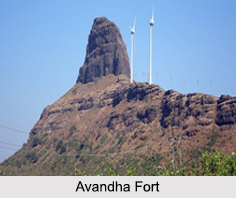 Located in the Aundhewadi village between the cities of Nashik and Ahmednagar in the state of Maharashtra, the Avandha Fort is a hill fort that stands at an elevation of about 4,400 ft. Thus, the fort is difficult to climb mainly because of its altitude and the numerous broken stone cut steps at many places. Leading up to the higher point is only few rocks cut cisterns and steps.
Located in the Aundhewadi village between the cities of Nashik and Ahmednagar in the state of Maharashtra, the Avandha Fort is a hill fort that stands at an elevation of about 4,400 ft. Thus, the fort is difficult to climb mainly because of its altitude and the numerous broken stone cut steps at many places. Leading up to the higher point is only few rocks cut cisterns and steps.
Part of one of the various forts in Maharashtra, the Avandha Fort is close to the Patta Fort, where the residents of the fort are called "Pattekar", which means residents of the Patta Fort.
History of Avandha Fort
Initially on 11th January, 1688, the Avandha Fort was captured by the Mughal army headed by Matabarkhan, who appointed Shyam Singh as the chief of the fort. Later in 1761, the Avandha Fort was captured by the Peshwas of the Maratha Empire and by 1818 it was under the reign of the British Empire. Currently, the fort is in ruins and is under the administration of the Government of India.
This article is a stub. You can enrich by adding more information to it. Send your Write Up to content@indianetzone.com.



















